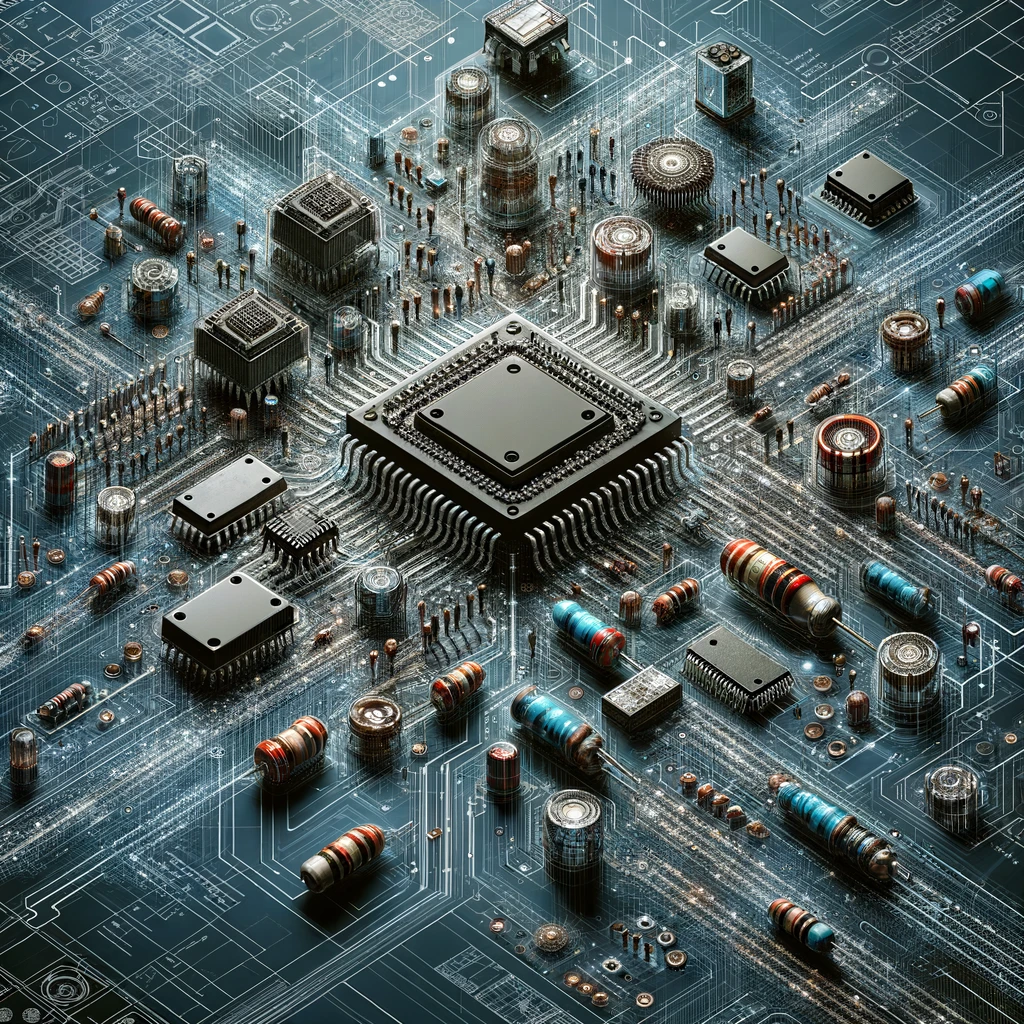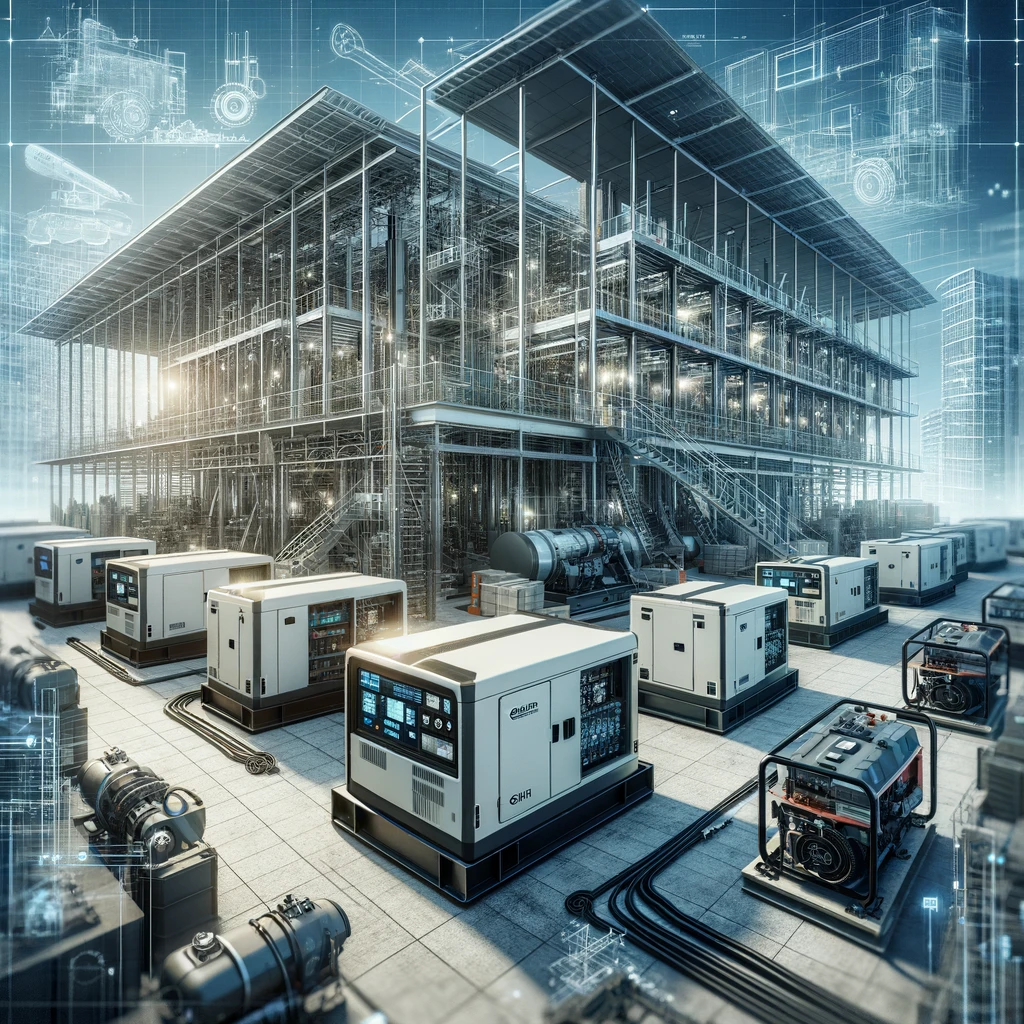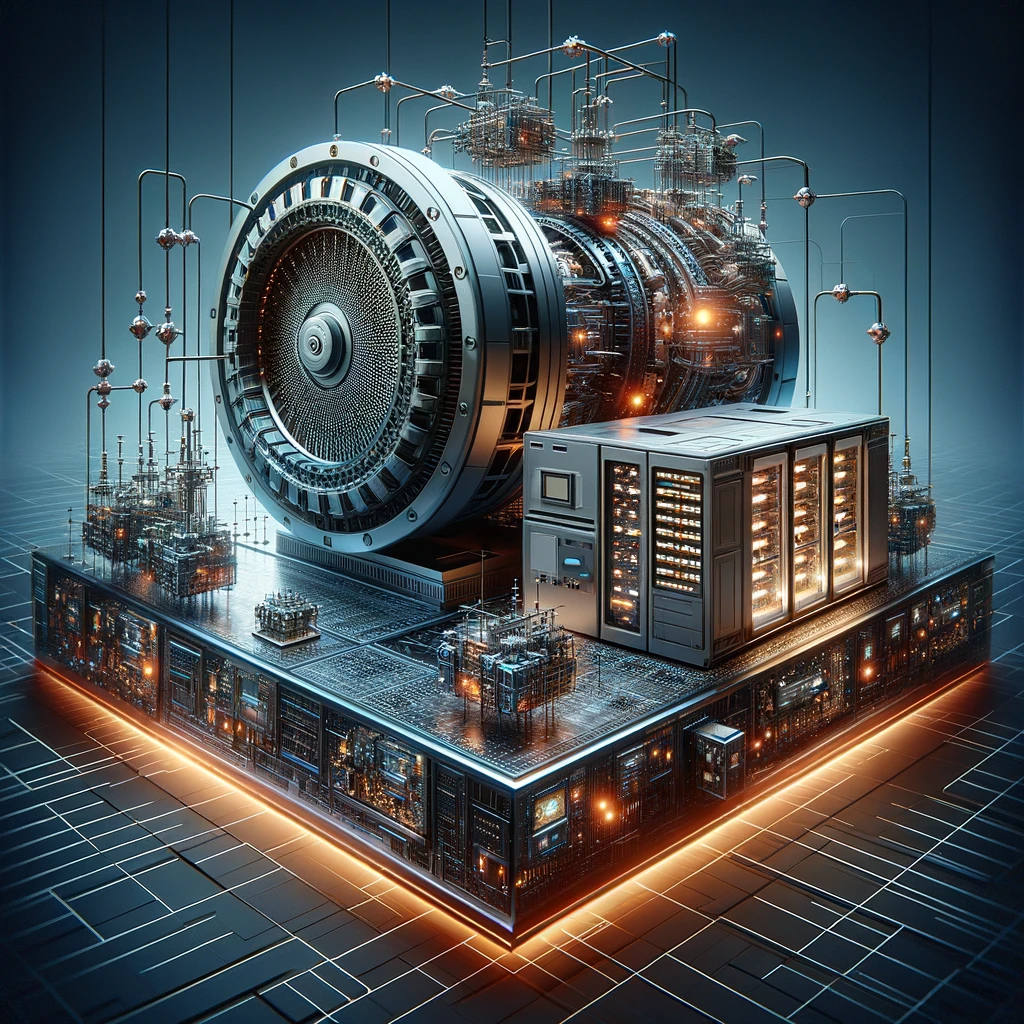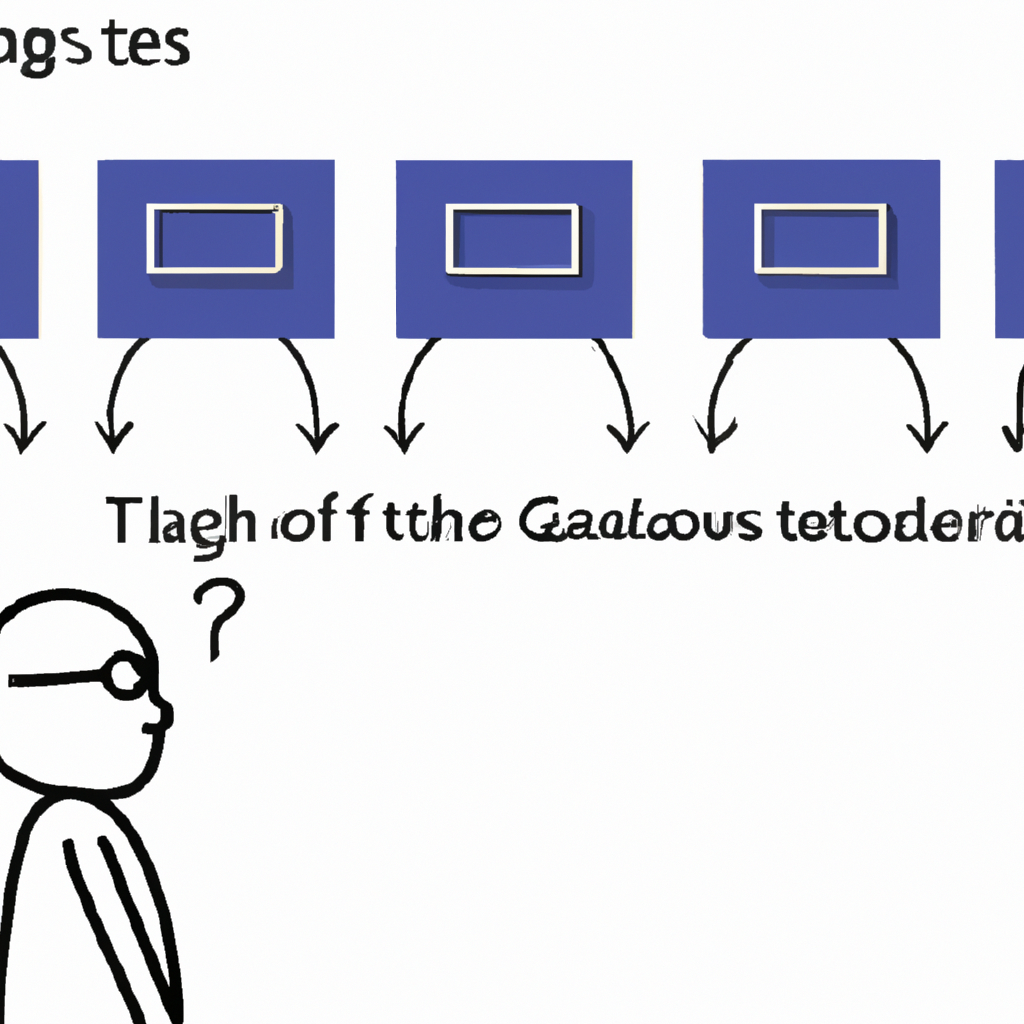Introduction to Generator Hire in Technological Innovation
The advancement of circuit design and system innovation relies heavily on having a consistent, reliable power supply. As projects become more complex with increased computation and connectivity demands, access to backup power generation becomes critical. Generator hire serves as a flexible, cost-effective solution for powering everything from small-scale prototyping to large-scale construction of advanced facilities.
Selecting the appropriate generator for a given application requires careful consideration of power load, fuel type, noise, emissions, and safety protocols. With technology rapidly evolving, construction sites must integrate adequate generator capacity to meet spikes in energy consumption from new materials and processes. Meanwhile, bleeding-edge circuit developers are pushing the boundaries of what’s possible, requiring robust off-grid power to stabilize their designs.
This article will analyze the pivotal role reliable backup power plays in enabling trailblazing innovations across the technology sector. We explore the electrical demands of emerging circuit architectures and cutting-edge systems. Delving into specific generator types, fuel efficiency trade-offs, environmental impacts, and safety best practices, we highlight the synergies between supple generator deployment and unprecedented breakthroughs across the high-tech industry.
Understanding the Basics of Circuit Design
Before analyzing the role of generators in advancing innovation, we first provide some key background on circuit design fundamentals. Circuits utilize various components like resistors, capacitors, transistors, diodes, and integrated chips to regulate the flow of electric current. By strategically organizing these elements, circuits can process signals, store data, amplify outputs, filter noise, and drive computations.

Designers employ schematics to map out their circuit’s architecture. Computer-aided design (CAD) tools translate schematics into physical layouts ready for printed circuit board (PCB) fabrication and population. Engineers must holistically consider parameters like voltage, current, power dissipation, frequency response, noise susceptibility, real-time performance, thermal characteristics, reliability, and fabrication techniques when optimizing their implementation.
Circuit building blocks include:
- Logic gates like AND, OR, and NOT which shape binary data flows
- Amplifiers strengthening input signals
- Oscillators generating repeating waveforms
- Filters selecting/rejecting frequencies
- Mixers, modulators, detectors, and demodulators transform signals
- Analog-to-digital (A/D) and digital-to-analog (D/A) converters translating between signal formats
- Microcontrollers executing programmed instructions
As complexity rises, even minor lapses in power continuity can completely disrupt circuit operation. designers therefore rely heavily on uninterrupted, noise-free generator backups.
The Role of Generators in Construction Projects
Construction projects require significant electrical power input to operate heavy machinery, tools, lighting, and environmental controls. Rather than drawing all energy needs from the grid, deploying local generators is standard practice. Benefits include:
- Continuous power supply unaffected by blackouts
- Voltage stabilization eradicating damaging spikes/dips
- Cost savings from peak shaving to avoid high energy charges
- Independence & reliability mitigating grid infrastructure limitations
- Environmental control for temperature, humidity, air filtration
- Backup assurances to avoid project delays from outages
- Flexibility in placement not constrained by wired connections
Construction generators range greatly in capacity and features. Smaller portable inverter generators can power hand tools, lights, and charging stations. Larger diesel units are robust enough to simultaneously drive excavators, concrete mixers, and cranes.
When estimating the required generator capacity in Kilowatts (KW), crews compile all equipment needs and apply safety multipliers to accommodate unexpected surges. While overestimating leads to unnecessary rental/fuel costs, a severe underestimate can force shutdowns or blowout breakers risking project delays.
Innovations in System Theory: A Brief Overview
Beyond advancing component implementation, power supplies also directly enable bleeding-edge system-level engineering across security, networking, data centers, IoT, AI, robotics, and quantum tech.
Systems theory is an interdisciplinary field analyzing the complex behaviors, relationships, and networks arising between dynamically interdependent entities.
Groundbreaking 21st century system innovations include:
- Smart grids with distributed, renewable integration
- Autonomous vehicles navigating unpredictable environments
- High-frequency trading algorithms transacting in microseconds
- Ubiquitous sensing through swarms of IoT devices
- DNA data storage achieving exabyte-scale capacity
- Quantum cryptography securing channels via unbreakable entanglement
- Bayesian machine learning inferring insights from sparse datasets
- Neuromorphic computing mimicking biological neural architectures
- Swarm robotics coordinating unmanned vehicle collectives
- Genomics sequencing mapping complex epigenetic markers
These complex system applications all mandate steady, surge-protected power to enable their cutting-edge capabilities. From initial prototyping to final real-world rollout, sequenced integration of reliable generator sources is imperative.
Next, we survey generator types compatible with diverse system innovations.
Essential Generator Types for Construction Needs
The optimal generator solution for a particular construction application depends on numerous factors:
Power output – Heavy equipment requires large diesel generators while smaller gas generators can cover temporary lighting and tools.
Run time – Will the generator be constantly cycled or run steady for long durations?
Portability – Smaller “suitcase” inverter generators are easily maneuvered around sites versus fixed-position industrial generators.
Fuel source – Diesel, gas, natural gas, or propane all impact safety, emissions, and logistics.
Environment – Spark-resistant units are mandated in mines and hazardous areas. Weatherproofing is vital for outdoor events.
Budget – Short-term rental or long-term financing? What tradeoffs satisfy break-even points?
Features – Voltage regulation, outlet types/capacity, noise level, and monitoring telemetry all enable applications.
Common reliable construction generator types include:
- Diesel generators – Robust, fuel-efficient workhorses for heavy loads
- Gas generators – More emissions but low cost for lighter tasks
- Propane generators – Abundant LP gas refueling with low emissions
- Natural Gas generators – Tap into existing gas infrastructure
- Inverter generators – Cleaner power with advanced monitoring
Crews should project lifecycle costs accounting for upfront purchase/rental fees plus ongoing fuel and maintenance. Vetting multiple vendors ensures competitive pricing with customized options to fulfill unique project requirements.
Emerging Technologies Influencing Circuit Design
While foundational circuit building blocks enable generalized computation, new materials, processes, and optimizations continue expanding functionality thresholds. As capabilities increase, so do the electrical demands.
Major emerging trends include:
- Atomically precise nanofabrication – Manipulate individual molecules and atoms for unprecedented efficiency
- 2D materials like graphene – Ultra-thin substances exhibit unique mechanical, optical, and electronic properties
- Photonic integration – Merge electronics and photonics for extreme speeds
- Quantum and neuromorphic paradigms – Novel computing models requiring specialized circuitry
- 3D/multipart die stacking – Optimize component density with vertical interconnections
- Flexible and stretchable materials – Bend and deform electronics to interface with curvilinear surfaces
- Additive manufacturing – Print conductive and resistive substances where needed
- Autonomous coordination – Enable circuits to self-organize based on environmental feedback
These technologies maximize speed, efficiency, durability and customization. However, exploiting them demands ever-increasing power availability. The construction of specialized manufacturing foundries and research labs to develop these techniques relies intimately on versatile generator integration.
Next, we review how synchronized generator hire directly fuels transformation circuit innovation and system optimization.
Generator Hire: Meeting the Power Demands of Innovation
Advanced circuits and systems research strives to push efficiency beyond conventional thresholds. However experimental conditions often dish up volatility.
Unproven cutting-edge hardware built from exotic materials requires extremely customizable power tuning. Engineers painstakingly shaping quantum forces or balancing delicate chemical reactions have no tolerance for supply variations that could wipe out years of progress.
The researcher needs serving by generator hire include:
- Voltage stabilization – Smooth output waveform without dips or spikes
- Transient response – Rapidly adjust power wave to match loads without delay
- Low-noise – Eliminate electromagnetic interference that could scramble sensitive signals
- Fuel security – Long run times to outage-proof multi-day experiments
- Environmental insulation – Maintain positive pressure, humidity and temperatures
- Dual redundancy – Seamless failover between multiple generators to enable uninterrupted research continuity
Rather than wasting capital building out comprehensive energy infrastructure, labs can simply lease “plug-and-play” generators scaled precisely to current experimental requirements. As landmark discoveries emerge, the same mobile equipment gets upgraded to match rising power demands.
Signal Processing Advances and Power Requirements
Signal processing techniques extract meaningful patterns from physical waveform measurements. Analog signals get filtered, amplified, converted, analyzed and visualized to reveal hidden insights.
Cutting-edge signal processing research expands data collection and inference capabilities in several key dimensions:
- Bandwidth – Higher frequencies capture finer-grained phenomena
- Resolution – Increased bit-depth improves dynamic range
- Channels – Additional sensor arrays enrich multidimensional data
- Throughput – Faster sampling rates strengthen temporal tracing
- Dimensionality – Sophisticated multi-parameter analytics boost contextual understanding
- Sensitivity – Sharper noise cancellation uncovers fainter signals
Achieving these enhanced signal processing capabilities depends critically on clean, steady generator power. Attempting to operate expanded instrumentation from noisy building mains will drastically corrupt vulnerable analog waveforms.
Generator Efficiency: Balancing Power and Performance
Maximizing generator energy efficiency saves money while minimizing environmental impacts from fuel expenditures and emissions. Efficiency metrics help inform rental decisions balancing project budget constraints with operational requirements.
Key efficiency specifications:
- Fuel consumption – Gallons or cubic feet burned per kWh at a given load capacity
- Load factor – Average output as a percentage of rated capacity
- Emissions – Particulate matter (PM), nitrogen oxides (NOx), carbon monoxide (CO) and hydrocarbon (HC) pollution ratings
- Sound power – Noise emissions often need mitigation in urban areas
- Reactive power – Balancing damnable capacitive/inductive phase shifts
Additional efficiency factors include generator voltage, skid size, cooling mechanisms, and safety ratings.
While tempting to over-provision excess capacity as a cushion for unexpected spikes, significantly underloading generators hurts efficiency. Proper sizing plus monitoring helps optimize lifetime costs.
Networking Systems: The Need for Reliable Power Sources
Communication networks like 5G, satellite, and cable transport exponentially growing data flows throughout public and private infrastructure. The intricate mesh of wired and wireless networking equipment depends on vigilant generator backups to safeguard uptime despite deteriorating electric reliability from aging grid infrastructure.
Types of networking systems:
- Cell towers – Provide wireless signal coverage across cellular networks
- Data centers – Massive server warehouses processing and storing data
- Core routers – Backbone hardware underlying the physical internet
- Fiber lines – Global high-speed optical cable connectivity
- Microwave – Wireless relay hubs across long distances
- Satellite arrays – Spacecraft linking ground stations
- Network switches – Equipment directing traffic flow locally
With communication demands escalating, power continuity protections ensure cascading outages don’t cripple economic productivity. Redundant failover configurations activate automated switchgear to safely shift generator sourcing following disruption.
Regular generator maintenance and rapid emergency repairs minimize the chances of prolonged downtime. Lightning protection, security protocols, access control and environmental monitoring provide additional reliability safeguards.
Hardware and Software Co-Design: Power Integration Challenges
Computing systems achieve incredible capabilities by synergistically coordinating hardware and software layers. Simultaneously advancing algorithms, processors, memory, interconnects and peripherals requires holistic co-design spanning massive teams across disciplines and locations.
Coordinating all components of complete systems poses intense power challenges:
- Account for peak computation spikes far exceeding average loads
- Provide adequate clean headroom for experimental reconfiguration
- Continuously evolve power architecture alongside rapid feature development
- Meet surging demands as increased efficiency unlocks higher utilization
- Consider both data center racks and onboard device power budgets
Careful power modeling informs generator deployments scalable from prototype labs to full-scale cloud server farms:
- Efficiency – Right-size generators operating near peak efficiency sweet spots
- Redundancy – Backup generators guarantee uptime despite grid failures
- Prioritization – Strategically cycle power between non-critical and essential loads
- Renewables – Hybrid solar/generators handle variable weather conditions
- Thermal – Guard temperature-sensitive electronics from generator exhaust
Only robust power infrastructure can incubate the full potential of multipronged hardware and software breakthroughs.
Case Studies: Generators in High-Tech Construction
Innovative technologies often demand purpose-built facilities pushing architectural boundaries. Specialized construction projects where generator hire proved essential include:
AI Research Lab, Toronto – Housed ultra-efficient liquid-cooled supercomputers leveraging experimental neuromorphic chips. The extreme compute density required 6 megawatts of UPS backup plus a 10-megawatt generator system to protect ongoing machine learning model training.

Quantum Data Center, Chicago – Stored quantum encryption keys in a shielded vault chilled to near absolute zero. Nitrogen generators maintained temperatures for qubit superposition while diesel generators handled the enormous cooling load with additional UPS redundancy.
Microchip Foundry, South Korea – State-of-the-art semiconductor fabrication plant necessitating an on-site natural gas power plant given the national grid’s inability to reliably supply the enormous steady load. Generator redundancy ensured uninterrupted production of cutting-edge hardware.
Rocket Engine Test Facility, Japan – Massive complex of test stands and propulsion research labs designing next-gen aerospace engines. SpaceX leased on-demand generator capacity flexible enough to accommodate experimental trials without needing to permanently over-provision infrastructure.
These examples demonstrate the value proposition of the right-sized generator hire in enabling complex, electricity-intensive technological construction initiatives without overextending capital budgets.
Environmental Considerations in Generator Use
While generators provide indispensable construction and research capabilities, improperly managed exhaust emissions can cause air pollution impacting local health. Conscientious projects therefore incorporate eco-friendly solutions.
Key environmental considerations:
- Exhaust redirection – Avoid venting fumes into occupied work areas
- Emissions controls – Catalytic converters, diesel particulate filters and mufflers reduce pollution
- Ultra-low sulfur fuel – Greatly cuts particulate matter versus regular diesel
- Load optimization – Ensure generators aren’t chronically underloaded causing incomplete combustion
- Routine maintenance – Catch issues like leaky injectors causing excessive emissions
- Noise mitigation – Shield nearby areas from hearing damage and annoyances
- Spill containment – Protect surroundings from leaked fluids contaminating the habitat
Testing emissions output ensures generators operate within air quality standards for targeted project timelines. Seeking equipment with “best available control technology” minimizes environmental harms enabling sustainable, responsible innovation.
Future Trends in Circuit and System Development
Generator integration will only increase in importance fueling next-generation circuit and system breakthroughs. We highlight leading areas where improved power foundations actively spur innovation:
printable electronics – Inkjet-printed circuits enable customized smart surfaces augmented reality – Energy-hungry wearables demand high-density batteries
electric aviation – Airborne systems require exceptionally reliable power during safety-critical maneuvers extraterrestrial exploration – Spacecraft and planetary stations depend on nuclear/solar energy sources biomedical implants – Wirelessly-charged devices require inductive charging efficiency
smart transportation – Autonomous EVs swap efficiently-generated power loads between propulsion and computation high-velocity trading – Microsecond advantage exploits speed-of-light propagation delays amplifying volatility
While each domain faces unique challenges, universally boosting access to clear, sustainable generator inputs provides a force multiplier affecting exponential progress across applications.
The Evolution of Generator Technology
Early generators consisted of simple manual hand-cranked magnetos directly powering small loads like telegraph relay stations. The late 1800’s saw the introduction of coal and steam-powered systems eventually getting replaced by more efficient hydroelectric dams and combustion engines. Modern generators now exploit a range of sophisticated energy sources.
Recent generator innovations include:
- Solid-state inverter designs generate exceptionally clean power with total electronic control
- Lightweight rare-earth magnets enable compact portable generators
- Hybrid tri-fuel models seamlessly switch between power sources like gasoline and propane
- Incipient fusion prospects promise abundant portable energy if containment challenges are solved
- Improved solar conversion efficiencies may enable renewable generators without battery buffers
- Fuel cells convert hydrogen directly to DC current for quiet, zero-emission output
Some futuristic generator technologies even seem like science fiction. Experimental triboelectric nanogenerators harvest ambient mechanical energy from vibration, wind and motion. Mobile thorium fission reactors theoretically offer clean nuclear energy everywhere. While these exotic technologies mature, incremental enhancements of existing generators continue reliably servicing essential applications.
Safety Protocols for Generator Use on Construction Sites
While generators deliver indispensable capabilities, improperly deployed equipment can wreak havoc. Damages ranging from annoying shutdowns to total disasters must be avoided through diligent safety engineering.
Key precautions:
- Locate generators away from flammable materials with cordoned clearance zones
- Ensure qualified technicians install wiring able to safely handle expected loads
- Use ground fault circuit interrupters (GFCI) to prevent electric shock
- Establish automatic voltage regulation, surge protection and control failsafe
- Install exhaust, propane, carbon monoxide and fire sensors tied to automatic cutoffs
- Frequently test backup systems ensuring seamless real-world failover
- Position spill containment pans below fuel lines and generator chassis
Generator safety demands vigilance from initial rental delivery through final decommissioning. While tempting to brush past tedious checklists and rush towards operational utility, neglecting seemingly minor details risks entirely preventable yet severe consequences. Safety engineering mitigates expenses from damaged equipment, project delays, legal liabilities, environmental infractions and injury compensations. Perhaps most critically, prioritizing core safety protocols maintains positive public perceptions allowing sustainable societal progress. Diligent generator hazard management is an investment yielding manifold dividends towards unlocking innovation made possible by versatile mobile power.
Powering Complex Circuit Designs: A Practical Guide
As circuits grow more intricate, designers must vigilantly co-optimize parameters affecting reliability, signal integrity, manufacturability and testability.
Common complexity drivers include:
- Ever-finer photolithographic process nodes packing more features per unit area
- Expanding pin counts interconnecting multiplying components
- Heightened clock speeds demanding higher power integrity
- Shrinking voltage margins cause logic failures if exceeded
- Increased layer counts complicate vertical clearances
- advancing packaging techniques stressing mechanical limits
- Expanding protocol complexity challenging verification
Carefully incorporating robust power architectures fortifies overall resilience accommodating greater intricacies. Strategies include:
- Specifying ultra-low-noise supplies with multiple filtering stages
- Adding supplementary linear regulators for analog and memory circuits
- Inserting decoupling capacitors across conduction paths
- Optimizing impedance tuning for target frequency harmonics
- Modeling temperature gradients and thermal dissipation
- Considering inductive and capacitive parasitic effects
- Strengthening electrostatic discharge (ESD) protection
- Enabling debug test points across voltage domains
As complexity compounds difficulties predicting emergent corner-case failures, conservative engineering guided by empirical feedback ensures designs operate safely across the full feasible range.
Innovations in Generator Fuel Efficiency
While diesel generators boast unmatched longevity and reliability, their bulkiness, noise and emissions motivate continual fuel efficiency improvements. Manufacturers chase incremental gains through both evolutionary and revolutionary techniques.
Diesel generator enhancements include:
- Streamlined cooling systems with strategically placed vents and ducts
- Turbochargers pack denser combustion into each stroke
- Low-friction components like brushless alternators
- Integrated mufflers/catalytic converters reducing noise/emissions
- Sophisticated motor controllers balancing engine runtimes across units
- Alternative biofuels and synthetic diesel to cut carbon output
- Hybrid tri-fuel flexibility switching between supply modes
- AI-guided dynamic loading optimization
- Heat recovery for cogeneration and steam turbine hybrids
Though diesel generators dominate harsh industrial use cases, lighter loads increasingly exploit cleaner alternatives. Natural gas offers pipeline abundance aiding affordability. Inverters leverage high-frequency switching to shrink form factors. Looking ahead, solid-state batteries and fuel cells foreshadow electrification enabling near-silent, zero-emission construction and research installations.
The Intersection of Power Supply and System Theory
Delivering clean power goes far beyond basic voltage specifications. Contributors span electromagnetic compatibility, redundancy planning, standards compliance, thermal design, physical hardening, monitoring telemetry and automated control logic.
Integrating reliable power with intricate system topologies requires considering:
- Fault tree analysis – mathematical risk models quantifying downtime
- Entropy dynamics – As complexity rises, so do power needs
- Empirical validation – Real-world testing reveals corner-case gaps
- Model predictive control – Optimal coordination across supply assets
- Game theory – Multi-agent simulations model complex emergent incentives
- Network theory – Power flows mesh across interdependent nodes
- Fuzzy logic – Continuous dynamism defies binary control thresholds
Harnessing these perspectives informs wise balancing of reliability, sustainability and cost when powering state-of-the-art system implementations.
Carefully incorporating robust power architectures fortifies overall resilience accommodating greater intricacies. Strategies include:
- Specifying ultra-low-noise supplies with multiple filtering stages
- Adding supplementary linear regulators for analog and memory circuits
- Inserting decoupling capacitors across conduction paths
- Optimizing impedance tuning for target frequency harmonics
- Modeling temperature gradients and thermal dissipation
- Considering inductive and capacitive parasitic effects
- Strengthening electrostatic discharge (ESD) protection
- Enabling debug test points across voltage domains
Maintenance Tips for Construction Generators
Preventative generator maintenance minimizes malfunctions and maximizes availability when disaster strikes. While tempting to just buy equipment and let it run untouched for years, periodic inspections and tune-ups save money over costly last-minute breakdown repairs.
Ideal maintenance includes:
- Changing air, fuel and oil filters
- Replacing lubricants and cooling fluids
- Testing/replacing batteries and alternators
- Inspecting lines and radiators for leaks
- Checking emergency cutoff functionality
- Validating automatic transfer switch operation
- Tuning engine timing and cylinder compression
- Monitoring sensor telemetry for early fault indications
- Tracking hours run to catch issues before failure
Ideally, maintenance gets scheduled during low-utilization seasons. Keeping detailed logs of all upkeep activities informs data-driven reliability optimization and customized lifespan extensions.
Advanced Thermal Management in Circuit Design
Escalating transistor densities produce intense waste heat threatening signal fidelity and component lifespan. Sophisticated thermal architectures therefore get incorporated throughout modern circuit constructions spanning materials, mechanicals, sensors, and dynamic cooling modulation.
Thermal management techniques include:
- High-conductivity substrate and heat spreader materials
- Strategic spacing, interleaving and grouping of hot elements
- Multi-stage Peltier thermoelectric coolers and microfluid heat exchangers
- Advanced thermally conductive adhesives, thermal interface materials (TIM) and lid sealants
- Temperature, current and humidity sensors driving real-time modulation -MINIATURIZED PHASE CHANGE MATERIALS SELECTIVELY ABSORBING TRANSIENT SPIKES
- Outdoor-rated waterproofing and extreme high/low environmental protection
Computing hardware pushing speed limits depends critically on thermal management acumen syncing with generators sized for extensive air conditioning needs protecting sensitive circuitry. Clean renewable energy minimizes waste heat missing from prime rainbow tables etched across the entire electromagnetic spectrum
Budgeting for Generator Hire in Construction Projects
Carefully optimizing generator rental or financing fees versus operational costs gives project managers the flexibility to adapt power infrastructure to evolving demands unconstrained by capital restrictions.
Forecasting total project expenses compares:
- Purchase – Higher upfront capital investment
- Rental – Redistributes costs over time as operational leases
- Lease – Similar to rental but with the option to retain ownership
Estimating generator budget tradeoffs calculates:
- Equipment capacity, type, features
- Fuel efficiency and consumption
- Planned utilization schedule
- Expected maintenance
- Logistics like transportation, delivery, permits and labor
- Redundancy needs and failover testing
- Environmental monitoring and emissions compliance
Updating power models as additional project details emerge ensures adequate infrastructure gets deployed on schedule without delaying critical build milestones. Expert generator consultants help navigate design complexities barreling towards optimal total cost of ownership across equipment lifecycles.
Generators and Renewable Energy: Emerging Synergies
While combustion generators burn fossil fuels causing pollution, integrating cleaner renewable sources promises more sustainable power alternatives. Converging approaches exploit hybridized configurations offering the best of both worlds.
Renewable generator combinations include:
- Solar + Battery banks – Store solar energy for night/cloud operation
- Wind + Fuel cell – Consistent wind smooths intermittent gust variability
- Geothermal + Turbine – Convert heat differentials into mechanical energy
- Solar thermal + Generator – Concentrate sunlight to superheat working fluids
- Biofuel + Diesel engines – Burn waste oils for cleaner combustion
- Ocean wave + Hydroelectric – Leverage tides and currents for flow regulation
These blended models optimize reliability, efficiency and environmental impacts across diverse operating contexts from remote islands to urban construction zones.
While renewable systems get disrupted by eclipses or droughts, integrating intelligent load-balancing algorithms governs seamless transitions across multiple overlapping power sources for all-weather resilience.
Understanding Logic Gates in Circuit Design
Digital logic gates establish the fundamental abstraction enabling modern computation. These building blocks process binary voltage signals using combinatorial Boolean algebra. Cascading layers of logic gates architect arbitrarily complex processors.
Basic logic gates types include:
- AND – Output high only if all inputs high
- OR – Output high if any input high
- NOT – Inverts single input signal
- XOR – Output high if input states differ
- NAND – AND gate with inverted output
- NOR – OR gate with inverted output
Common gate variations add capabilities:
- Tri-state gates enable signal isolation
- Majority gates set thresholds beyond binary
- Parity gates check for errors
- Schmitt trigger hysteresis accommodates noisy inputs
Designers assemble intricate gate combinations to enact addition, multiplexing, registers, encoders, decoders, and arithmetic logic units (ALUs). Sophisticated electronic design automation (EDA) software now automates optimal gate-level implementations from high-level software languages accelerating Moore’s law.
Powering Quantum Computing: The Role of Generators
Quantum computing promises revolutionary capabilities by encoding data within exotic atomic scale phenomena defying classical physics. Harnessing nature’s most intimate secrets requires extreme control over environmental conditions only achievable through robust generator integration.

Prominent quantum computing hardware platforms all demand exceptional power infrastructure:
- Superconducting – Ultracold temperatures enable lossless qubit interactions
- Trapped ion – Incredibly consistent electromagnetic fields levitate and manipulate ion chains
- Photonics – Precision laser interferometry entangles photons for linear optical quantum gates
- Topological – Protected quasiparticle braiding transports error-resistant quantum information
Achieving qubit coherence mandates extensive configurations:
- Cooling infrastructure – Cryostats, adiabatic demagnetization refrigerators (ADRs) and helium chillers
- Shielded rooms – Faraday cages and Mu metal shielding blocks external interference
- UPS redundancy – Uninterrupted conditioning fortifies against grid fluctuations
- Air handling – Positive pressure with humidity control prevents contamination
- Solar avoidance – Prevent photon absorption erasing quantum states
- Vibration isolation – Near-zero seismic/acoustic noise prevents qubit entanglement collapse
All considered, powering quantum computers resembles launching spacecraft more than running servers. But the immense payoff from exponential speedups across computational frontiers makes the extensive generator-reliant infrastructure indispensably worthwhile.
The Impact of Generator Hire on Project Timelines
Renting generators as needed for varying construction loads optimizes utilization rates and protects budgets from over-provisioning. Avoiding capital risks also accelerates project timelines by circumventing upfront financing delays.
Key project planning advantages from responsive generator hire include:
- Commence the build phase immediately without waiting months to arrange complex loans
- Flexibly adapt generator fleet as designs evolve rather than locking in overestimates
- Cover unexpected delays by rapidly extending rentals instead of expensive new equipment purchases
- Tap vendor personnel expertise rather than training internal generator management teams
- Simplify budgeting without complex depreciation schedules to track
- Retire generators quickly as the phase completes rather than gradually paying down liabilities
- Transfer maintenance responsibility risks entirely to rental companies
The combination of financial flexibility and operational agility proves invaluable for programs with tight delivery deadlines or navigating changeable requirements. Generator hire therefore offers a strategic competitive advantage to accelerate innovative initiatives.
Advanced Neural Interfaces: Powering the Future
Brain-computer interfaces (BCI) establish direct communication pathways between biological neural networks and external hardware. Innovations in sensors, machine learning, and neuroscience research are unlocking unprecedented applications by interfacing nerves.
Promising capabilities include:
- Bidirectional telemetry enabling advanced prosthetics
- Restoring sensory capacity to impairment disorders
- Deep brain stimulation treating neurological conditions
- Memory augmentation and cognitive assistance
- Novel VR/AR environments driven by imagination
- Artistic creative expression through thought
- Automating tedious tasks through intention
Achieving the full potential of human-computer convergence relies on compact embedded electronics with specialized power delivery. Implantable devices demand:
- Wireless inductive charging from external generators
- Ultra-low power neural sensor arrays with amplification
- Implant-wide power multiplexing to components
- Fault tolerance given inaccessible location
- Biocompatible waterproof encapsulation
Advancing neural interface adoption requires Procedure miniaturization to reduce physical imposition and surgical invasiveness. But simultaneously growing capability complexity strains embedded generator capacity raw payload capacity carrying more computing resources into body
Legal and Regulatory Aspects of Generator Hire
Construction projects face extensive regulatory obligations spanning environmental reviews, permitting, inspection, licensing, import/export controls, taxation, and local zoning ordinances. Generators specifically trigger oversight regarding air emissions, fuel transportation/storage, noise limits, electrical safety plus code compliance.
Key considerations when renting generators:
- Research relevant national/regional equipment standards for safety, testing and certification
- Obtain permits for deploying generators from local authorities
- Arrange delivery logistics compliant with dangerous goods shipment restrictions
- Fulfill generator inspection prerequisites before operational commissioning
- Validate electrical work follows local wiring codes and gets inspected
- Monitor emissions and environmental factors to satisfy legal exposure thresholds
- Maintain adequate staff generator training as failures trigger liabilities
- Clarify trans-border tax implications for foreign equipment rentals and fuel purchases
- Establish generator access/security protocols complying with cyber policies
While dense regulations slow deployments, proper due diligence ensures installations proceed safely, legally and responsibly. Checklists prevent easily avoided pitfalls from causing entirely preventable yet disastrous outcomes.
Generator Noise Management in Urban Construction
Generator roar easily overwhelms background urban noise floors. Sustained construction noise causes public disturbances plus damages long-term hearing threatening operator safety. Careful acoustics planning therefore gets incorporated using noise-dampening generator configurations or alternative power mechanisms where possible.
Potential mitigations include:
- Enclosures insulate sound with soundproof barrier walls
- Exhaust mufflers minimize engine detonations
- Equipment isolation pads dampening vibration transfer
- Noise cancellation algorithms in controller firmware
- Sound barriers erected around equipment sites
- White noise generators masking annoying frequencies
- Restricting operation hours to minimize disturbances
- Renting “whisper quiet” generator models premium builds
- Temporary grid connections avoiding generator use
- Smaller distributed power stations instead of a few large units
Monitoring perimeter decibel readings ensures noise pollution stays within habitable ranges for neighboring properties over a prolonged timeframe.
The Role of Generators in Remote Construction Sites
Building infrastructure like cellular towers, mines, dams and highways often necessitates accessing extremely isolated areas disconnected from electric utilities. Attempting to string miles of temporary distribution cables gets avoided by airlifting modular generator systems wherever needed.
Key criteria for remote generators:
- Lightweight compacts simplify transportation logistics
- All-weather resilience withstanding extreme environments
- Autonomous controls enabling largely unsupervised operation
- Fundamental component ruggedization fortifying durability
- Redundant generator/battery hybridization protects the continuity
- Telemetry sensors monitor the status with satellite uplinks
- Long runtime from large internal diesel/propane capacity
- Wildlife protections preventing disrupted air intakes or nesting
- Fire safety given risks of brush fires from sparks
Generator hire proves especially cost-competitive for remote zones given the steep intricacies of transporting and operating equipment in harsh conditions. Leveraging expert vendor turnkey assistance smooths deployments keeping vital timelines on track.
Training and Education for Generator Operation
Specialized technicians expertly oversee generator health optimizing power output, reliability and longevity through continuous monitoring and preventative upkeep. While intelligent controllers automate most functionality, human oversight prevents disasters ensuring proper fueling, maintenance, cleaning and troubleshooting saves organizations fortune over deferred complications.
Operator curriculum spans:
Safety – fire suppression, spill protocols, electrical precautions, weather emergencies
Equipment anatomy – component identification/capabilities to localize arising issues
Sensor readings – Interpreting & validating telemetry like vibration, temperature and exhaust
Maintenance – Filter changes, lubrication, coolant specs, leak checks, battery care
Load balancing – Distribute current across multiple units to maximize efficiency
Rapid repair – Troubleshoot faults from error logs to minimize downtime
Fueling procedures – Dangerous material handling, environmental safeguards
Regulatory compliance – Emissions testing, safety drills, hazardous materials licensing
Resilience tactics – flood mitigation, access restrictions, redundant systems, grounding
Skilled generator crews adeptly manipulate energy forces supplying the foundation for organizations to build upon delivering innovative services worldwide.
The Future of Generators in Smart Construction
The global construction landscape continues adopting bleeding-edge techniques like robotics, 3D printing, augmented reality, aerial drones and distributed ledgers. These exponential technological shifts demand extensive power flexibility keeping projects on pace and offering strategic competitive differentiation.

Smart generator infrastructure plays an indispensable role:
- Autonomous coordination – Self-diagnosing generators request drones deliver replacement parts or summon crews for complex repairs
- Additive manufacturing – Portable generators feed remote metal printers constructing components on-demand without the overseas shipping
- Position tracking – GPS sensors ensure rented generators aren’t stolen or misplaced
- Environmental monitoring – Pollution detectors quantify ecological harm enabling carbon-neutral offsets
- Mesh networking – Generators communicate supply/demand signals directing current to the most crucial loads
- Machine learning – Self-optimizing algorithms balance runtime evenly across equipment predicting maintenance needs
- Virtual power plants – Web-connected generators get pooled into larger capacities available for sharing economy rental access
These innovations exemplify the multiplying potential from intersecting versatile generator resources against multiplying high-tech tools underpinning infrastructure for future societies.
Conclusion: Integrating Generator Hire in Modern Circuit and System Innovation
Constructing advanced circuits and engineering complex systems both revolve around creatively manipulating electricity – the lifeblood of powering possibilities. While grid infrastructure broadly distributes commodity power, pushing boundaries on the bleeding edge necessitates robust generator systems skillfully delivering stable, resilient energy.
This article traced the pivotal role generators play across an array of high-consequence sectors spanning computing, telecommunication, aerospace, automation and healthcare. From towering data center CPU stacks to microscopic quantum logic gates – reliable electricity undergirds every active component. We explored how purposefully integrating flexible generator hire injects projects with indispensable capabilities unlocking trailblazing innovations through superior environmental control, noise reduction and uninterrupted continuity safeguarding years of irreplaceable research from potential catastrophic failures.
Renting generator equipment matched precisely to transient project demands accelerates development timelines, contains expenses to directly relevant operational years, and simplifies capacity scaling flexible enough to catch up with perpetually evolving experimental breakthroughs. Generators form the underlying power substrate enabling nearly all modern technological wizardry. Only by prioritizing robust generator integration can inventors focus fully on advancing civilization without distractions constantly struggling to nurture finicky building wiring threatening to throttle budding opportunities.
The future remains full of promise as generators supply the vital juice keeping possibilities charged towards purposeful contributions benefitting humankind. We stand at the dawn of an automation revolution expanding prosperity through abundance. But foundational reliability necessitates generators steadily channeling current into imaginative frontiers. There exist no shortcuts circumventing natural laws – progress requires transferable power.




